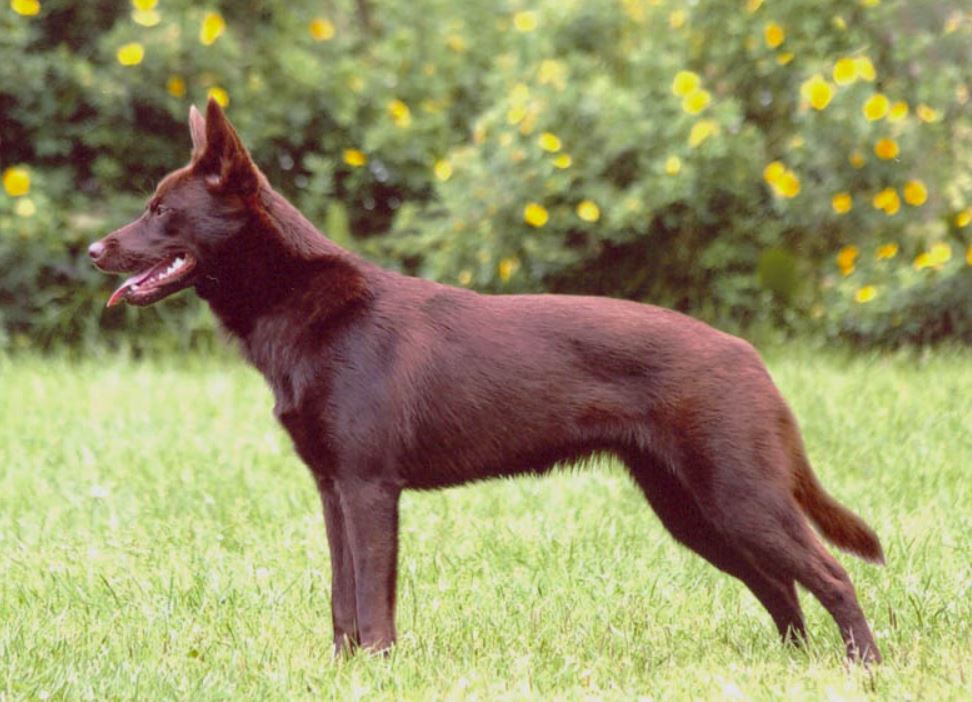The Working Kelpie is a dog that stayed true to its origins, able to perform the tasks in which it was initially bred. He is a diligent dog that boasts excellent enthusiasm for working stock. Yet, he has a tranquil side, knowing when to step back and relax. As a gentle breed, he can also live peacefully with children and other pets. Just make sure to satisfy his high exercise needs, and you’ll stop him from finding an “occupation,” and instead let him be your great family companion.
Origins of the Working Kelpie
It is easy to think that the Working Kelpie’s ancestors are sheepdogs owned by shepherds. Surprisingly, they trace their roots from ones owned by landowners from renowned and revered families. The Kelpie breed’s foundation wasn’t intentional and was only brought by lucky coincidences. Yet, the dog has been a significant addition to the sheep and cattle industries.
The Kelpie’s long history begins with the dogs brought by Arthur Robinson from Scotland to Australia. Those were black and tan Collies named Brutus and Jennie given to Gilbert Elliot, his brother-in-law. Both the dogs were incredible workers. On their voyage to Australia, the pair mated, and Jennie whelped upon arrival to the country.
Caesar, a pup from this mating, was then given to John Rich of the Narriah station. Meanwhile, Jack Gleeson owned a dog named Kelpie that he had acquired when he swapped a horse for her in Victoria’s Warrock Station. Caesar and Kelpie mated and produced the famous Kings Kelpie.
While these dogs were admired for their working abilities, their popularity only catapulted when Kings Kelpie had an impressive performance at a sheepdog trial event held at Forbes in New South Wales in 1879. Kings Kelpie had a brilliant display and amazed many viewers of the well-publicized event. Her style and skills went around quickly, and everyone wanted to get a “Kelpie” pup. The acclaim resulted in the eventual naming of the dog breed.
More dogs were added to the bloodline, such as Nero of Kildary station, Barb, a pup produced when Caesar’s little brother Laddie mated to Kings Kelpie, and other dogs from different owners. They participated in many competitions and sheepdog trial events and performed swiftly and seamlessly, earning many people’s interest and appreciation.
From then on, the Kelpies were brought to different parts of the world for their herding livestock, mainly goats, sheep, and cattle. In Australia, they serve as one of the main sheepdogs, helping to work millions of sheep.
Characteristics of the Working Kelpie
Height: 19-25 inches
Weight: 28-60 pounds
Life Expectancy: 12-15 years
Hypoallergenic: No
The Working Kelpie’s appearance may vary as many breeders focus on its function rather than its aesthetics. Generally, the overall look is characterized by a medium-sized, strongly-muscled body, implying that he is built for longer work periods. His eyes are fairish-sized, oval-shaped, and wide-set, which can be blue, amber, or dark brown. The nose is commonly black but can vary depending on the coat’s color. Meanwhile, the coloration and markings can range from any kind linked to the breed, which means almost all are acceptable except for brindle and white. The coat tends to be longer around the neck, the thighs’ back, and the tail’s underside.
The Working Kelpie is an alert and intelligent breed. He has an immense dedication to work and has an incredible instinct and natural ability to work livestock, be it in the yard or open countries. While he may have limitless vigor, the Working Kelpie has its pleasant, active yet equable demeanor. He finds outstanding balance, knowing when to apply its working enthusiasm or when to tone things down.
Nevertheless, the Working Kelpie is not recommended for families that have a less active lifestyle. He knows he needs to put his skills into good use. He needs a job, or else he will look out on his own. If not mentally and physically stimulated, don’t be surprised to see him chase cars and work them like sheep. But, in terms of his family, the Working Kelpie makes a great companion that is generally gentle and is amenable to live harmoniously with children and other pets.
Caring for the Working Kelpie
With its smooth coat and minimal undercoat, the Working Kelpie is relatively easy to groom. Going over them with a hound glove at least once a week will help lift dead hair and any other debris. He doesn’t have a strong smell, so occasional bathing can suffice in keeping them clean. While most Working Kelpies often wear their fast-growing nails when working stock, it is best to check and trim their nails when necessary to avoid cracking and splitting. Meanwhile, teeth must be brushed when needed. Then, ears should be examined regularly to prevent dirt and wax buildup, which can lead to infection.
As an energetic breed, the Working Kelpie needs a lot of exercise. Fortunately, he is willing to do lots of activities, such as going for walks, hiking, fetch, or simply playing in the backyard. If you’re indoors, you can consume his energy by engaging him to chase balls or play hide-and-seek. Blessed with smarts, these dogs are also amenable to be trained for canine sports, such as obedience, rally, and agility.
In general, the Working Kelpie is a hardy breed. However, they can be vulnerable to common disorders affecting other breeds, such as hip dysplasia, luxating patella, and cryptorchidism. Finding a reputable and responsible breeder can help you gain more information and get a healthy Working Kelpie should you decide to have one in your home.

